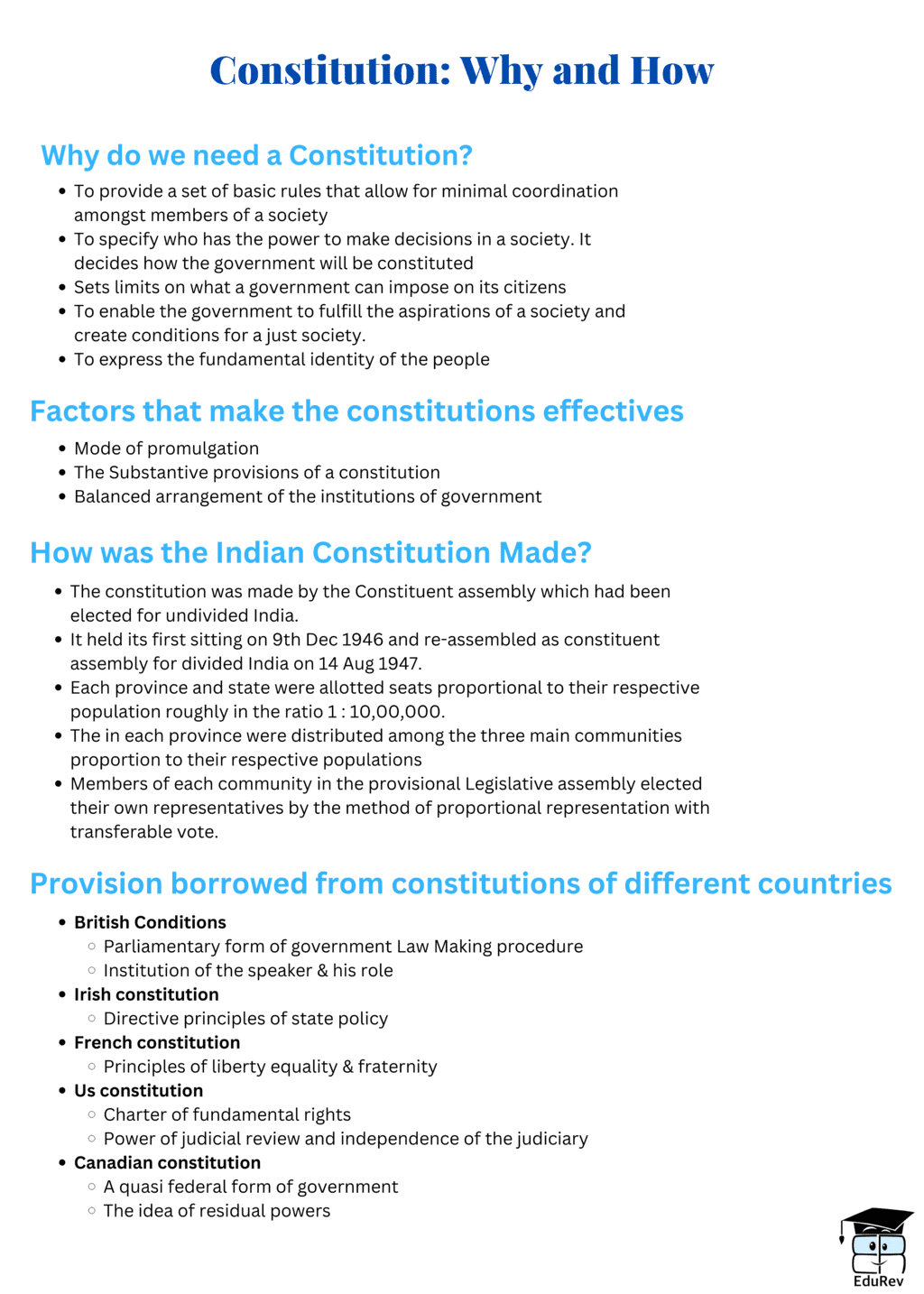Humanities/Arts Exam > Humanities/Arts Notes > Political Science Class 11 > Mind Map: Constitution: Why & How?
Mind Map: Constitution: Why & How? | Political Science Class 11 - Humanities/Arts PDF Download

The document Mind Map: Constitution: Why & How? | Political Science Class 11 - Humanities/Arts is a part of the Humanities/Arts Course Political Science Class 11.
All you need of Humanities/Arts at this link: Humanities/Arts
|
43 videos|268 docs|39 tests
|
FAQs on Mind Map: Constitution: Why & How? - Political Science Class 11 - Humanities/Arts
| 1. Why was the Constitution created? |  |
Ans. The Constitution was created to establish the framework of the government of a country or organization, defining its principles, powers, and limits. In the case of a country like the United States, the Constitution was written to form a more perfect union, establish justice, ensure domestic tranquility, provide for the common defense, promote the general welfare, and secure the blessings of liberty to the people.
| 2. How was the Constitution created? |  |
Ans. The Constitution was created through a process known as constitutional convention. In the case of the United States, the Constitutional Convention took place in 1787, where delegates from the thirteen states gathered to draft the Constitution. The delegates debated and discussed various ideas and compromises, resulting in the final document that was then sent to the states for ratification.
| 3. What is the significance of the Constitution in a democratic society? |  |
Ans. The Constitution is of great significance in a democratic society as it serves as the supreme law of the land. It provides the framework for the functioning of the government and protects the rights and freedoms of the citizens. It establishes the separation of powers, ensuring a system of checks and balances, and sets out the fundamental principles and values that guide the nation.
| 4. What are the key features of a constitution? |  |
Ans. Some key features of a constitution include the establishment of the structure and powers of government, the protection of individual rights and freedoms, the definition of citizenship, the establishment of the rule of law, and the provision for the amendment or revision of the constitution itself. Additionally, a constitution often includes a preamble that outlines the goals and aspirations of the nation.
| 5. How does the Constitution protect the rights of citizens? |  |
Ans. The Constitution protects the rights of citizens through various mechanisms. It includes a Bill of Rights or similar provisions that explicitly outline specific rights and freedoms, such as freedom of speech, religion, and assembly. Additionally, the Constitution establishes the separation of powers, ensuring that no single branch of government becomes too powerful and infringes upon the rights of citizens. The Constitution also provides for the due process of law and guarantees equal protection under the law, further safeguarding the rights of citizens.
Related Searches

















